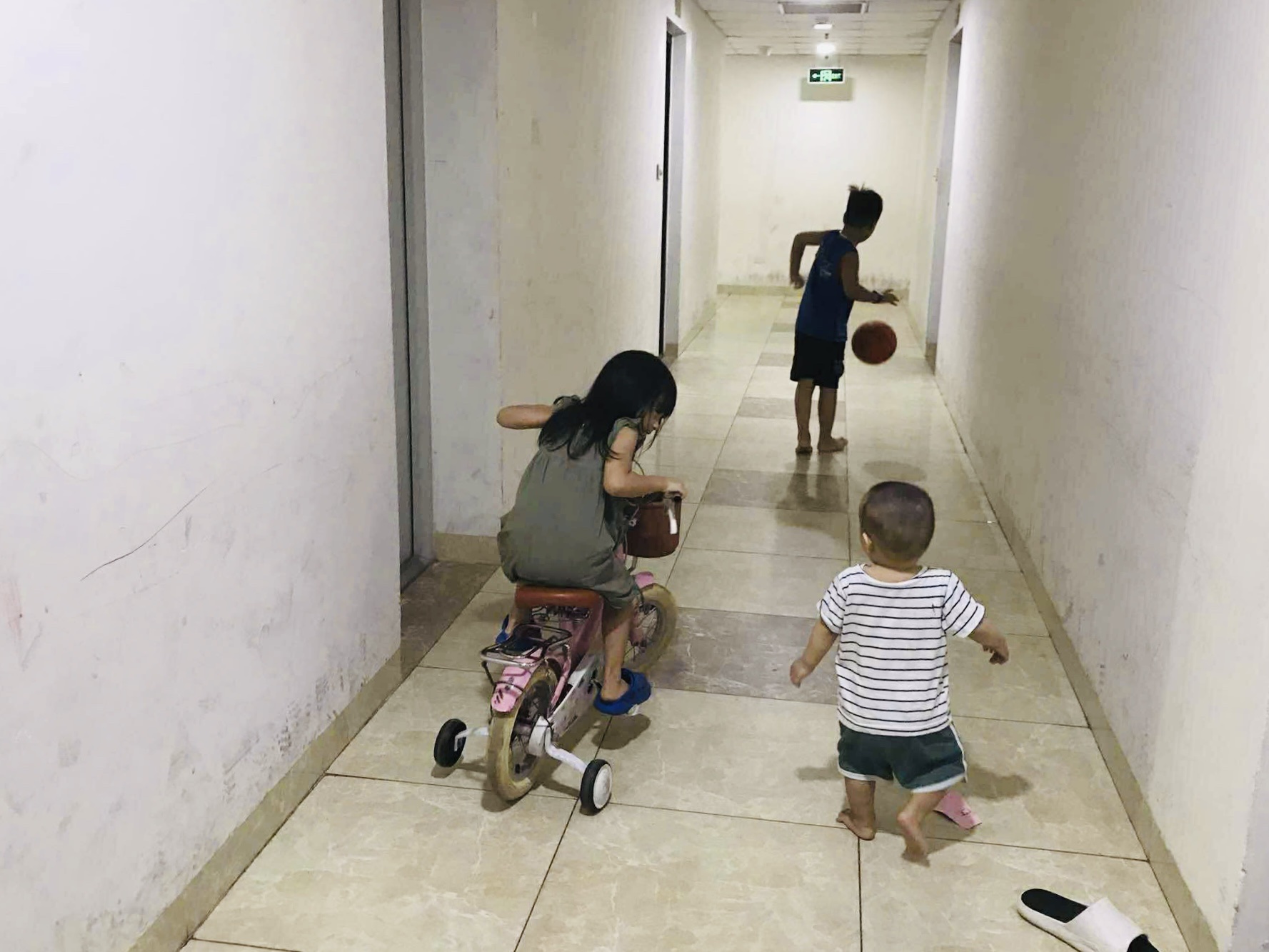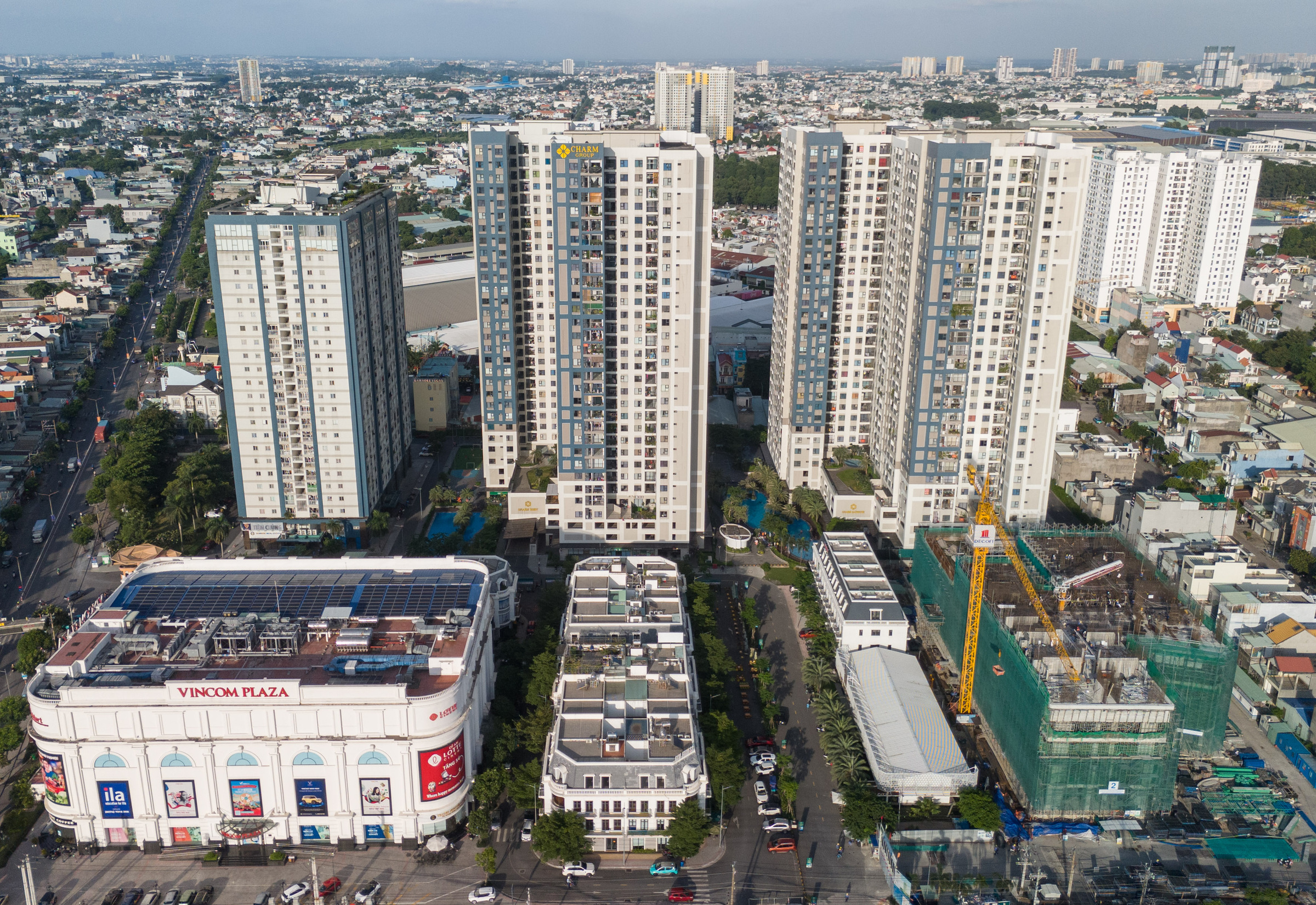At 9 p.m., just as Hoang Duyen in Hoang Mai, Hanoi, lay down after a long day at work, she was startled by shouting and the thud of a ball being kicked outside her door. Her 4-month-old son in her arms started to cry.
"Every night, the two children next door drag each other out into the hallway to play soccer and yell. Sometimes their parents even join in," Duyen said wearily.
Not just the two children next door, but a dozen other children on the same floor also turn the common hallway into their playground. The screech of roller skates and the clatter of toy cars go on for hours, making it impossible for her to rest. After several attempts to address the issue, Duyen received complaints about being "difficult." Some even argued that the hallway is a shared space and no one has the right to forbid children from playing there. The building management intervened, but the peace only lasted a few days.
Unable to bear it any longer, Duyen sold her apartment and moved to a lower floor with fewer children, hoping for more tranquility.
 |
Children playing at Hanh's apartment building in Dong Anh, Hanoi, on 17/9. Photo: Ho Hanh |
Children playing at Hanh's apartment building in Dong Anh, Hanoi, on 17/9. Photo: Ho Hanh
Duyen's suffering is not unique. A VnExpress survey found that over 80% of respondents said they had been bothered by the noise of children playing in apartment hallways. For 70-year-old Nguyen Thi Trinh in Dong Anh district, the noise from the hallway has become a nightmare.
Last year, the apartment next to Trinh's was rented out as a daycare center. During the day, there was crying and soothing. In the evenings, dozens of children on the floor would play, run, and slam doors. "I was so exhausted that I often had to knock on every door to ask them to keep it down," she recounted. Trinh reported the issue to the building management and even filed a complaint with the communal People's Committee, but to no avail.
The hallway noise conflict stems from the clash between two legitimate needs: children's right to play and others' desire for peace and quiet.
On social media, posts expressing frustration about hallway noise in apartment buildings are always lively, with hundreds of comments and opposing views.
A 2020 study on Hanoi apartment living, published in the US National Library of Medicine, found that 28% of families interacted in common areas like hallways, elevators, and lobbies when their children were playing. Surveys indicate that frequent use of these spaces causes discomfort and reduces residents' privacy and safety.
Vo Trong Nghia, an architect and master's degree holder from the Urban Studies Department of the University of Social Sciences and Humanities (Vietnam National University, Ho Chi Minh City), explained that lobbies and hallways are designed for circulation, brief greetings, or short-term activities, not as playgrounds or community spaces. "In reality, children running, playing soccer, and riding bikes in lobbies cause damage to common property, even triggering fire alarms, which is a source of frustration in many apartment buildings," he said.
According to Nghia, the root of the problem is that many apartment buildings do not provide playgrounds as required by the 2014 Housing Law. Some buildings have them, but they are often perfunctory, too small, or unsafe.
From a psychological perspective, Hong Huong (Children's Rights Protection Association) suggests that children play in hallways partly because of convenience. While parents are busy cooking and cleaning, children can easily run out the door to play with friends. "This is instinctive and also a child's right to play," she said. However, this need sometimes clashes with adults' desire for rest and quiet.
Ho Thi Hanh, 32, a mother of three young children living next to Trinh, expressed remorse that her children's noise affects her neighbors. Her apartment building has a designated play area, but due to her busy schedule, she cannot always take all three children downstairs. "Despite reminders, my children don't always listen, especially when the neighbor's kids are still playing," she said.
According to Hanh, most households in the building have young children, so it's hard to avoid the noise of children playing and shouting. "I truly don't mean to cause a disturbance, but living in a place where 9 out of 10 households have children, it's difficult for us to control everything," she said.
Child psychology experts emphasize that the responsibility lies with adults to provide guidance and organization. Parents, residents, and building management need to establish guidelines to help children understand that play also needs limits and respect for the community.
Under current law, causing noise exceeding technical standards can result in fines ranging from 1 to 160 million VND, depending on the severity. However, most authorities admit that enforcement is difficult for various reasons. The most significant challenge is that noise measurement and analysis must be conducted by an independent unit certified by the Ministry of Natural Resources and Environment. Furthermore, the noise level must be adjusted for background noise (traffic, conversations, sounds from other establishments). In many cases, the background noise itself already exceeds permissible limits.
 |
Real estate in the eastern area of Ho Chi Minh City, Di An ward (formerly Binh Duong province), with apartments, townhouses, and land plots, 7/2025. Photo: Quynh Tran |
Real estate in the eastern area of Ho Chi Minh City, Di An ward (formerly Binh Duong province), with apartments, townhouses, and land plots, 7/2025. Photo: Quynh Tran
A security representative at Trinh's apartment building said they frequently receive complaints from residents about children making noise in the lobby. However, since they are children, it's difficult to address the issue and establish specific rules. "We can only remind parents to supervise their children. It's rare for neighbors to report this to the authorities," the representative said.
According to Nghia, to address the root cause, separate soundproof community spaces or outdoor playgrounds should be provided. Lobby design should incorporate noise-reducing materials and clearly designated waiting areas, play areas, and circulation zones. During operation, softer solutions like small play corners with rugs, glass partitions, or wooden screens can be implemented, encouraging quiet play and establishing designated play times.
Globally, three common models help mitigate noise from children playing in apartment hallways: Playrooms - soundproof play areas, Pocket playgrounds - small playgrounds on the ground floor or rooftop, utilizing unused spaces and Multi-functional spaces with zoning: organizing lobbies into distinct waiting areas, play areas, and circulation zones.
According to Nghia, besides the efforts of building management and residents, the fundamental solution lies with the developers. They need to adhere to standards and provide adequate playgrounds and community spaces from the design phase.
"This is a fundamental solution to prevent children from having to play in hallways, while ensuring a harmonious living environment for all residents," he said.
Trinh said her only option is to live with the noise pollution and wait for the children to grow up, become busy with their studies, and play outside less. "But by then, I might not be alive anymore," she said.
Pham Nga












